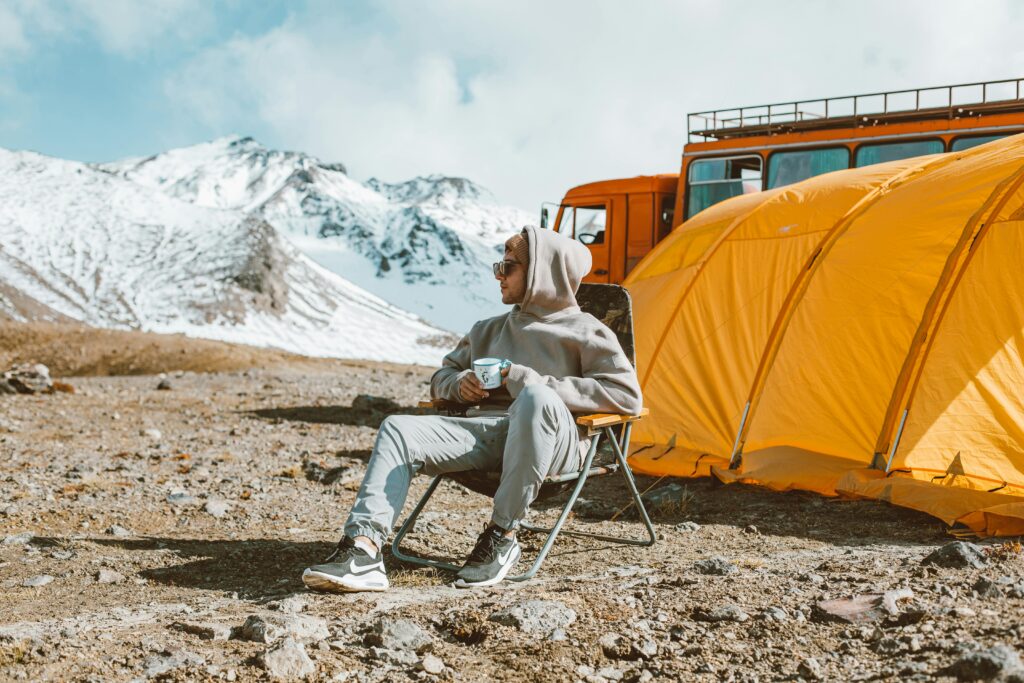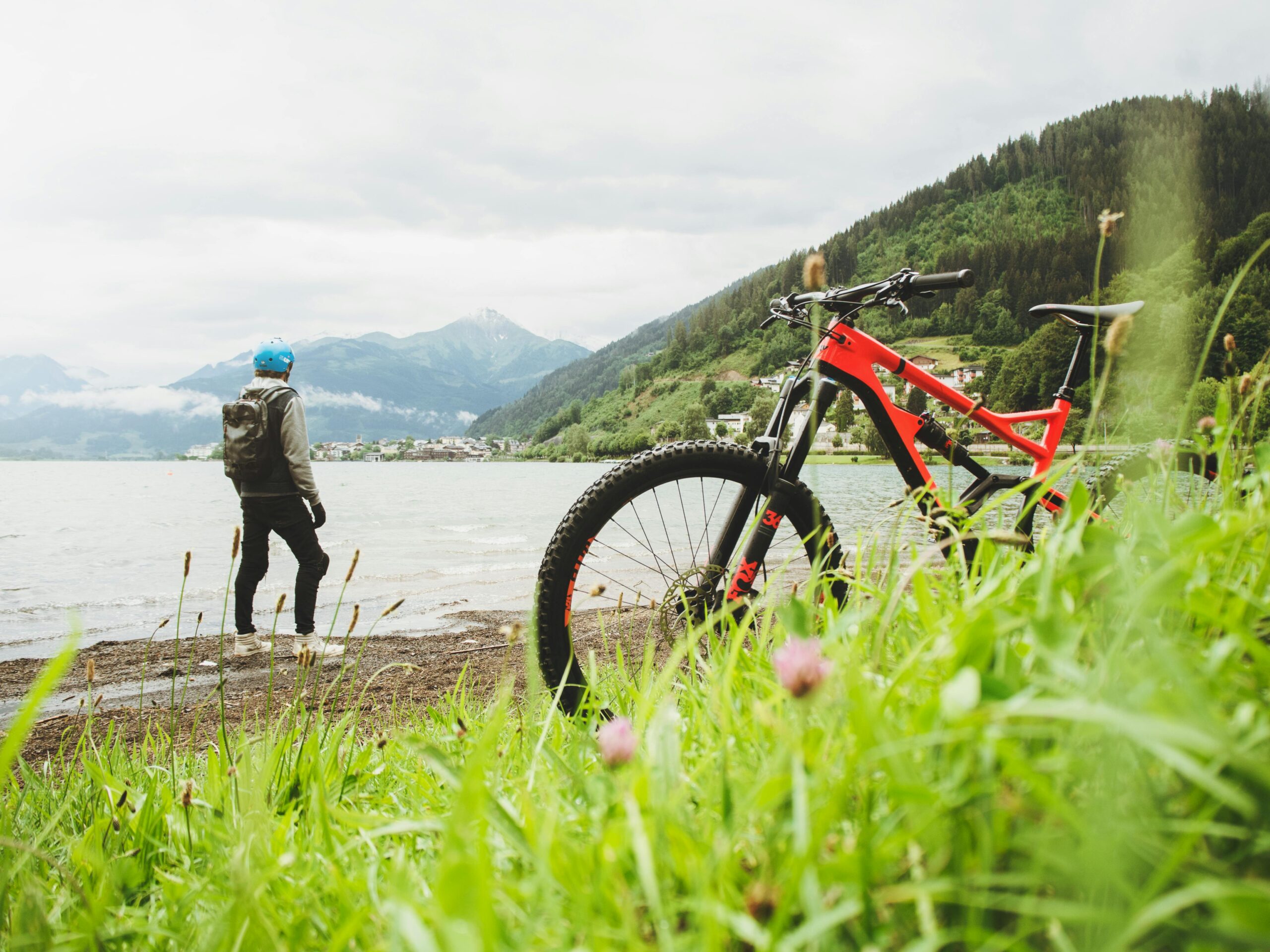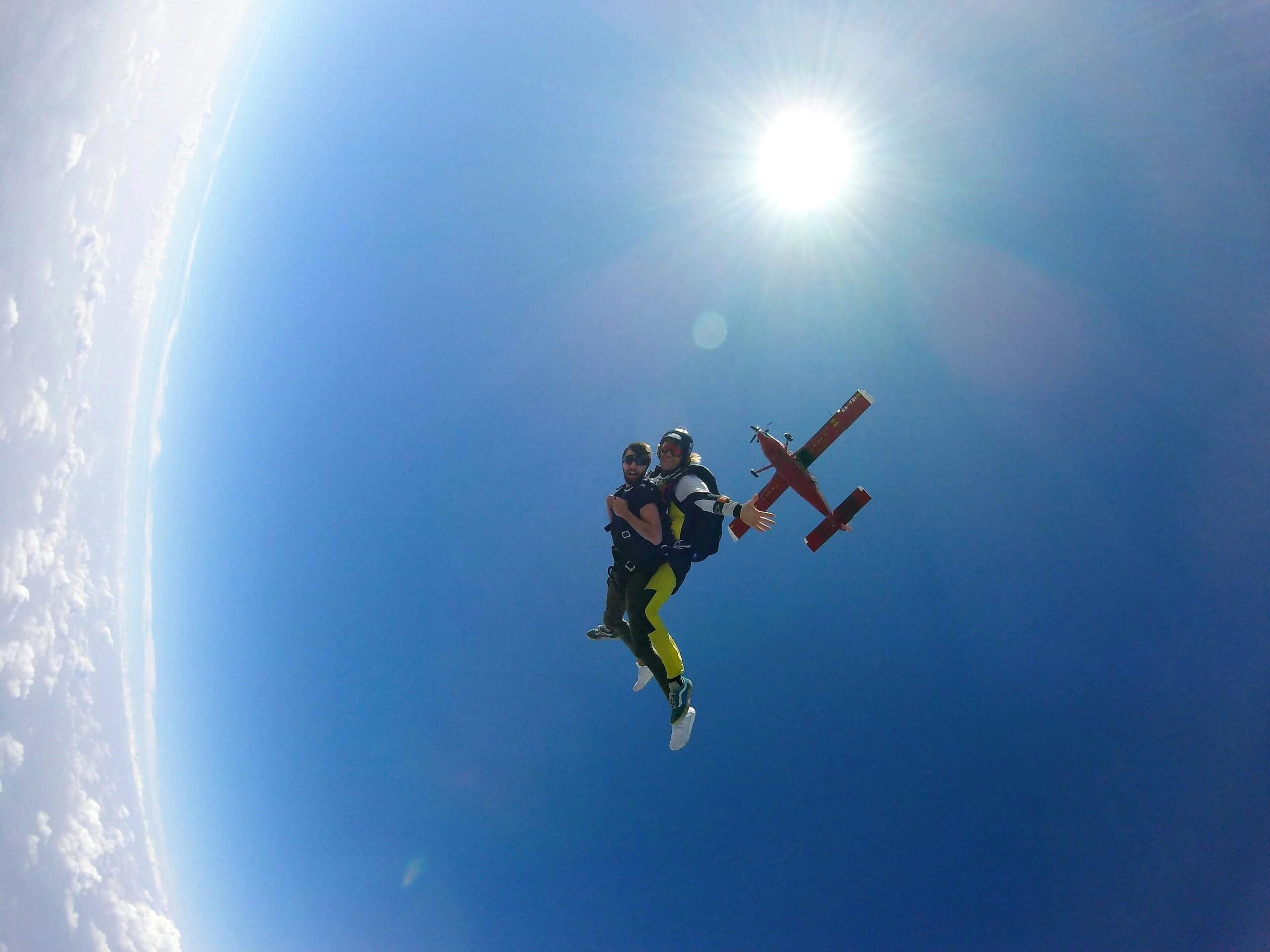Venturing into the wilderness for a camping trip offers a unique opportunity to disconnect from the hustle and bustle of everyday life and immerse oneself in the serenity of nature. However, such an experience requires careful planning and preparation to ensure both enjoyment and safety. In this article, we will explore essential tips for camping in the wilderness, from planning and setting up camp to safety measures and leave-no-trace principles. Whether you’re a seasoned outdoor enthusiast or a novice adventurer, these tips will help you make the most of your wilderness camping experience and create memories that will last a lifetime.
Choosing the right location
Selecting the perfect wilderness camping spot is crucial for an enjoyable and safe outdoor experience. Firstly, consider the terrain and weather conditions of the area. Choose a location that suits your skill level and preferences, whether it’s a forested area, mountain terrain, or near a water source. Research the regulations and restrictions of the area, such as permits or seasonal closures. Additionally, assess the accessibility of the location and ensure it’s within a reasonable distance from your starting point. Lastly, prioritize solitude and minimal impact on the environment by avoiding crowded areas and sensitive ecosystems.
Packing essentials
Packing the right gear and supplies is essential for a successful wilderness camping trip. Start with the basics: shelter (tent or tarp), sleeping bag, and sleeping pad for comfort and protection from the elements. Don’t forget to pack adequate clothing for various weather conditions, including layers for warmth and waterproof gear for rain. Food and cooking supplies, such as a portable stove, fuel, and lightweight cookware, are essential for sustaining energy during your adventure. Other important items include a map and compass (or GPS), first aid kit, multi-tool, flashlight or headlamp with extra batteries, and a water filtration system or purification tablets for safe drinking water.
Setting up camp
Once you’ve reached your chosen campsite, take time to set up your camp properly. Start by clearing the area of any debris and rocks to create a flat and comfortable sleeping surface. Pitch your tent in a level spot, avoiding low-lying areas that could flood during rain. Secure your tent with stakes and guy lines to withstand strong winds. Set up your cooking area away from your sleeping area to prevent attracting wildlife. Finally, store food and scented items in bear-proof containers or hang them from a tree branch at least 100 feet away from your campsite.
Safety precautions
Prioritize safety during your wilderness camping trip by taking necessary precautions. Familiarize yourself with potential hazards in the area, such as wildlife encounters, inclement weather, and rugged terrain. Always inform someone of your itinerary and expected return date before heading into the wilderness. Pack a well-stocked first aid kit and know how to administer basic first aid for injuries or emergencies. Practice proper food storage and hygiene to prevent foodborne illnesses. In case of severe weather or other emergencies, have a plan for seeking shelter or evacuating the area.
Leave no trace principles
Leave no trace principles are essential for minimizing your impact on the environment and preserving the wilderness for future generations. Follow these principles by packing out all trash and waste, including biodegradable items like food scraps and toilet paper. Dispose of human waste properly by digging a cathole at least 6 to 8 inches deep and covering it after use. Respect wildlife by observing from a distance and not feeding or approaching animals. Stay on designated trails to avoid damaging fragile ecosystems, and avoid building new campsites or fire rings. Finally, leave natural and cultural artifacts undisturbed for others to enjoy. By practicing leave no trace principles, you can help protect the wilderness and ensure its beauty for years to come.
Immersing in nature
One of the most rewarding aspects of wilderness exploration is immersing oneself in the natural environment. Disconnecting from the hustle and bustle of everyday life and embracing the tranquility of the wilderness can be incredibly rejuvenating. Take time to appreciate the sights, sounds, and smells of nature around you. Whether it’s the gentle rustle of leaves in the breeze, the chirping of birds in the trees, or the scent of pine wafting through the air, allow yourself to fully experience the beauty of the wilderness. Take leisurely walks or hikes through the forest, pausing to admire scenic vistas or interesting wildlife. Consider spending time near bodies of water, such as lakes or streams, and enjoy the calming effect of flowing water or the reflective surface of a tranquil lake. By immersing yourself in nature, you can cultivate a deeper connection to the natural world and experience a sense of peace and contentment.

Activities to try
Wilderness camping offers a myriad of opportunities for outdoor recreation and adventure. From hiking and backpacking to fishing and wildlife watching, there’s something for everyone to enjoy. Explore nearby trails and embark on day hikes or multi-day backpacking trips to discover hidden gems and breathtaking landscapes. Consider trying your hand at fishing in nearby streams or lakes, where you can reel in a variety of freshwater fish species. Birdwatching is another popular activity, especially in areas known for diverse bird populations. Bring along a pair of binoculars and a field guide to identify different bird species and observe their behaviors. For a more adrenaline-pumping experience, try rock climbing or mountain biking in rugged terrain. No matter your interests or skill level, wilderness camping offers endless opportunities for outdoor adventure and exploration.
Mindfulness and relaxation
In today’s fast-paced world, it’s more important than ever to prioritize self-care and mental well-being. Wilderness camping provides the perfect opportunity to disconnect from technology and distractions and practice mindfulness and relaxation. Take time each day to engage in activities that promote relaxation and stress relief, such as yoga, meditation, or simply sitting quietly and observing nature. Practice deep breathing exercises to calm the mind and body and reduce feelings of anxiety or tension. Consider bringing along a journal to record your thoughts and reflections or sketch the natural beauty around you. Embrace the slower pace of life in the wilderness and allow yourself to fully unwind and recharge. By prioritizing mindfulness and relaxation during your wilderness camping trip, you can return home feeling refreshed, rejuvenated, and ready to tackle whatever challenges life may bring.
Finding the perfect spot
Selecting the ideal campsite is essential for a comfortable and enjoyable outdoor experience. When scouting for the perfect spot, consider factors such as terrain, weather conditions, and proximity to water sources. Look for a flat and level area free of rocks and debris to pitch your tent or set up your shelter. Avoid low-lying areas that could collect water during rain or high winds that could make for a chilly night. If possible, choose a spot with natural windbreaks like trees or bushes to provide additional protection from the elements. Additionally, consider the surrounding environment and choose a location that offers scenic views or access to nearby trails and recreational activities. Remember to follow Leave No Trace principles and select a campsite that minimizes your impact on the environment.
Setting up your shelter
Once you’ve found the perfect spot for your campsite, it’s time to set up your shelter. Whether you’re using a tent, hammock, or tarp, proper setup is crucial for a comfortable and secure night’s sleep. Start by clearing the area of any rocks, sticks, or sharp objects that could damage your shelter or sleeping gear. Lay out your tent or tarp and assemble the poles or stakes according to the manufacturer’s instructions. Ensure that your shelter is taut and securely staked to withstand strong winds and inclement weather. If using a hammock, choose sturdy trees or anchor points and adjust the suspension straps to achieve the desired height and angle. Finally, add a groundsheet or footprint underneath your tent to protect the floor from moisture and wear.
Organizing your campsite
Organizing your campsite is essential for efficiency, safety, and comfort during your wilderness camping trip. Start by designating specific areas for different activities, such as sleeping, cooking, and storing gear. Keep your sleeping area clear of food and cooking supplies to minimize the risk of attracting wildlife. Use a tent or bear-proof containers to store food and scented items safely away from your sleeping area. Create a designated cooking area with a portable stove or campfire ring, and always practice proper fire safety techniques. Organize your gear and supplies in a systematic manner to make them easy to find and access when needed. Consider using storage bins or stuff sacks to keep items organized and protected from the elements. By taking the time to organize your campsite properly, you can maximize your enjoyment of the wilderness and ensure a memorable outdoor experience.
Understanding wildlife risks
When venturing into the wilderness, it’s essential to understand and mitigate potential risks associated with wildlife encounters. Research the native wildlife species in the area you’ll be camping and learn about their behaviors and habitats. Be aware of common wildlife risks, such as encounters with bears, mountain lions, or venomous snakes, and take precautions to minimize the likelihood of dangerous encounters. Store food and scented items in bear-proof containers or hang them from a tree branch at least 100 feet away from your campsite. Keep a safe distance from wildlife and avoid approaching or feeding animals. If you encounter wildlife, remain calm and back away slowly, giving the animal space to retreat. Carry bear spray or other deterrents and know how to use them in case of an aggressive encounter. By understanding wildlife risks and taking appropriate precautions, you can enjoy the wilderness safely and responsibly.
Fire safety precautions
Fire safety is paramount when camping in the wilderness to prevent accidental wildfires and ensure the safety of yourself and others. Before starting a campfire, check local regulations and restrictions regarding fire bans or seasonal limitations. Choose a designated fire ring or pit in established campgrounds or use a portable stove for cooking. Clear the area around your fire pit of any flammable materials, such as leaves, grass, or overhanging branches, to create a safe buffer zone. Keep a source of water nearby, such as a bucket or hose, for extinguishing the fire in case of emergency. Never leave a campfire unattended, and always fully extinguish it before leaving your campsite or going to sleep. Use the drown, stir, and feel method to ensure the fire is completely out, then scatter the ashes to further prevent any potential flare-ups. By practicing proper fire safety precautions, you can minimize the risk of wildfires and enjoy the warmth and ambiance of a campfire responsibly.
Emergency preparedness
Being prepared for emergencies is essential when camping in remote wilderness areas where help may be limited or delayed. Create a comprehensive emergency plan that includes contact information for local emergency services, as well as the nearest hospital or medical facility. Share your itinerary and planned route with a trusted friend or family member before departing, and establish check-in times or locations along your journey. Pack a well-stocked first aid kit and know how to administer basic first aid for common injuries or emergencies. Carry essential survival gear, such as a map and compass (or GPS), whistle, signal mirror, and emergency shelter, in case you become lost or stranded. Consider bringing along a satellite phone or personal locator beacon (PLB) for communication in areas without cell service. Stay informed about weather conditions and potential hazards in the area, and be prepared to adjust your plans accordingly. By prioritizing emergency preparedness, you can mitigate risks and ensure a safe and enjoyable wilderness camping experience.
Minimizing environmental impact
Leave No Trace principles are fundamental guidelines for minimizing our environmental impact while enjoying the wilderness. One of the core principles is to minimize our impact on the natural environment by leaving it as we found it, or even better. This means avoiding trampling vegetation, disturbing wildlife habitats, or altering natural features. When setting up camp, choose durable surfaces like bare ground or established campsites to minimize damage to delicate ecosystems. Avoid building new fire rings or structures, as they can scar the landscape and disrupt natural processes. By following Leave No Trace principles, we can help preserve the beauty and integrity of the wilderness for future generations to enjoy.
Proper waste disposal
Proper waste disposal is essential for maintaining the cleanliness and health of the wilderness. Always pack out what you pack in, including all trash, food scraps, and personal waste. Never leave behind any garbage or waste, as it can harm wildlife, pollute water sources, and detract from the natural beauty of the landscape. Carry a lightweight, reusable trash bag or container to collect and transport your waste, and be sure to secure it properly to prevent leaks or spills. When disposing of human waste, follow Leave No Trace guidelines by digging a cat hole at least 6 to 8 inches deep and at least 200 feet away from water sources, trails, and campsites. After use, fill in the cat hole and pack out any used toilet paper or hygiene products. By practicing proper waste disposal, we can minimize our impact on the environment and keep the wilderness pristine for future generations.
Respect for wildlife
Respecting wildlife is crucial for maintaining the balance and integrity of natural ecosystems. When exploring the wilderness, observe wildlife from a safe distance and avoid approaching or disturbing animals. Never feed wildlife, as it can disrupt their natural behaviors and create dependence on human food sources. Keep a respectful distance and use binoculars or a telephoto lens to observe wildlife up close without causing stress or harm. If you encounter wildlife on the trail or at your campsite, give them plenty of space and avoid sudden movements or loud noises. By respecting wildlife and their habitats, we can coexist harmoniously with nature and ensure the continued survival of diverse plant and animal species.
FAQs
Q. What are some essential items to pack for a camping trip in the wilderness?
A. First and foremost, ensure you have a sturdy tent, sleeping bag, and sleeping pad for a comfortable night’s rest. Pack appropriate clothing for the weather conditions, including layers for warmth and rain gear. Bring plenty of water and a water purification method, as well as non-perishable food items and a way to cook them. Don’t forget essentials like a flashlight or headlamp, a first aid kit, a map and compass (or GPS), and a multi-tool or knife.
Q. How should I prepare for encounters with wildlife while camping?
A. Research the wildlife in the area you’ll be camping in to understand potential encounters. Store food securely in bear-proof containers or hang it from a tree away from your campsite. Keep a clean campsite, free of food scraps or strong odors that might attract animals. If you encounter wildlife, remain calm and back away slowly, giving them space. Never approach or feed wild animals.
Q. What safety precautions should I take while camping in the wilderness?
A. Always tell someone your itinerary and expected return time before heading into the wilderness. Be aware of potential hazards like inclement weather, rough terrain, or dangerous wildlife. Familiarize yourself with basic first aid and emergency procedures. Follow Leave No Trace principles to minimize your impact on the environment and preserve the wilderness for others.
Q. How can I navigate effectively in the wilderness?
A. Carry a detailed map of the area you’ll be camping in and a reliable compass or GPS device. Familiarize yourself with the map and identify prominent landmarks before setting out. Pay attention to natural signs like the position of the sun or the direction of prevailing winds to orient yourself. Practice navigation skills in familiar terrain before attempting more challenging hikes or backpacking trips.
Q. What should I do in case of an emergency while camping?
A. Stay calm and assess the situation. If someone is injured, administer first aid and seek medical help if necessary. If you’re lost, stay in one place to avoid further confusion and make yourself visible to searchers. Use signaling devices like a whistle, mirror, or brightly colored clothing to attract attention. If you have cell phone reception, call emergency services and provide your location as accurately as possible.
Conclusion
Camping in the wilderness is not just an activity; it’s an adventure that fosters a deep connection with nature and offers unparalleled serenity. By following the essential tips outlined in this article, you can embark on your wilderness camping trip with confidence, knowing that you are well-prepared to handle whatever challenges may arise. So pack your gear, lace up your boots, and venture into the great outdoors for an unforgettable experience that will rejuvenate your spirit and leave you longing for more.




